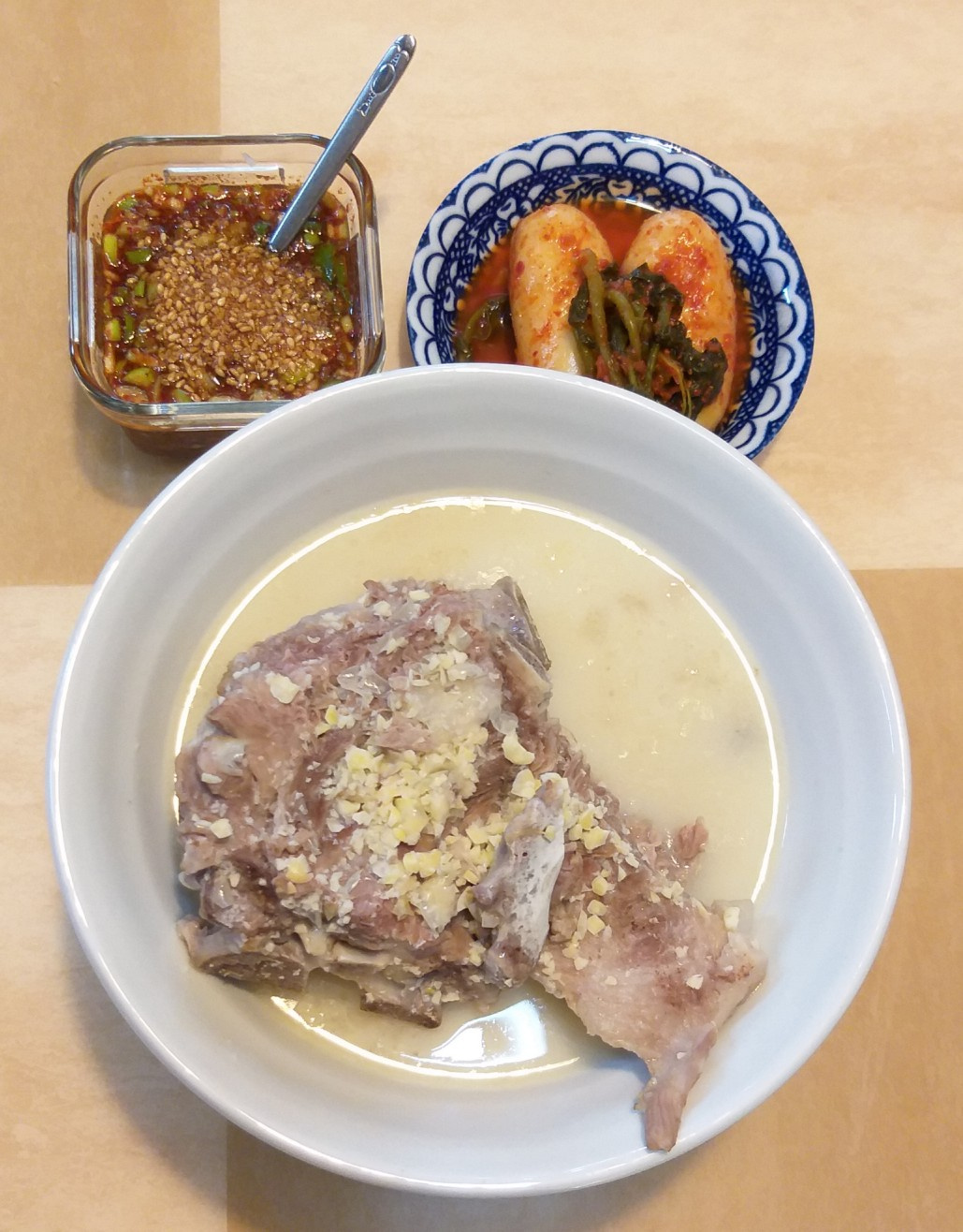Rich and Hearty North Korean Style Soybean Paste and Pork Bone Stew (Kongbiji Deungbyeo Guk)
Authentic North Korean Soybean Paste and Pork Bone Stew

The essence of ‘Easy Slow Nutrition Cook’! This is the authentic North Korean-style soybean paste and pork bone stew that my mother used to make. In winter, my mother would cook a large pot of this stew and we’d eat it for days, sometimes even turning it into Gamjatang. This savory and clean-tasting stew is perfect as a baby food and also as a nourishing meal for the elderly with delicate teeth. Try this warm and nutty North Korean soybean paste stew on a cold winter day!^^
Main Ingredients- Pork Back Ribs 1.2kg
- White Soybeans (Mejuk Beans) 200g
- 1 large Onion
Seasoning and Garnish- Korean Soy Sauce (Guk-ganjang) to taste
- Brewed Soy Sauce (Jin-ganjang) to taste
- 1 Tbsp minced garlic
- 1.5 Liters water (for boiling pork bones)
- 2 Tbsp chopped green onion (for garnish)
- 2/3 Tbsp chili powder (optional, for added spice)
- Sesame oil to taste
- Sesame seeds to taste
- Korean Soy Sauce (Guk-ganjang) to taste
- Brewed Soy Sauce (Jin-ganjang) to taste
- 1 Tbsp minced garlic
- 1.5 Liters water (for boiling pork bones)
- 2 Tbsp chopped green onion (for garnish)
- 2/3 Tbsp chili powder (optional, for added spice)
- Sesame oil to taste
- Sesame seeds to taste
Cooking Instructions
Step 1
Prepare 1.2kg of pork back ribs. Soak them in cold water for about 3 hours to thoroughly remove the blood. Change the water 2-3 times during soaking to ensure the ribs are clean and the broth will be clear and free of gamey odors.

Step 2
Wash 200g of white soybeans (mejuk beans) and soak them in water overnight. Soaking them well will make them soft and easier to grind later.

Step 3
Place one large, roughly chopped onion at the bottom of a large pot. This prevents the pork ribs from sticking. Add the drained pork ribs and cover them with fresh water (about 1.5 liters). Bring to a boil over high heat, then reduce to medium-low heat and simmer for about 1 hour and 30 minutes. Be careful not to overcook the ribs at this stage, as they will be simmered further with the soybean paste.

Step 4
Transfer the soaked soybeans to a blender. Add a little water and blend until the beans are slightly chunky, not completely smooth. This will give the stew a pleasant texture and enhance its nutty flavor. (If blended too finely, the stew can become thick and pasty, similar to a soybean paste stew).

Step 5
After simmering the pork ribs for 1 hour and 30 minutes, carefully remove the ribs from the pot. Skim off any excess fat from the surface of the broth. (Too much fat can make the stew taste greasy.) Pour the blended soybean paste into the pot and continue to simmer for another 30 minutes. The stew will thicken and release a wonderful nutty aroma as the soybean paste cooks. Season the stew with Korean soy sauce and brewed soy sauce to your liking. Add minced garlic and chili powder (if using) for a touch of spice. Serve the hearty North Korean soybean paste and pork bone stew hot, garnished with chopped green onions, sesame seeds, and a drizzle of sesame oil. Enjoy the tender meat from the bones and the rich, savory broth by mixing it with rice.



